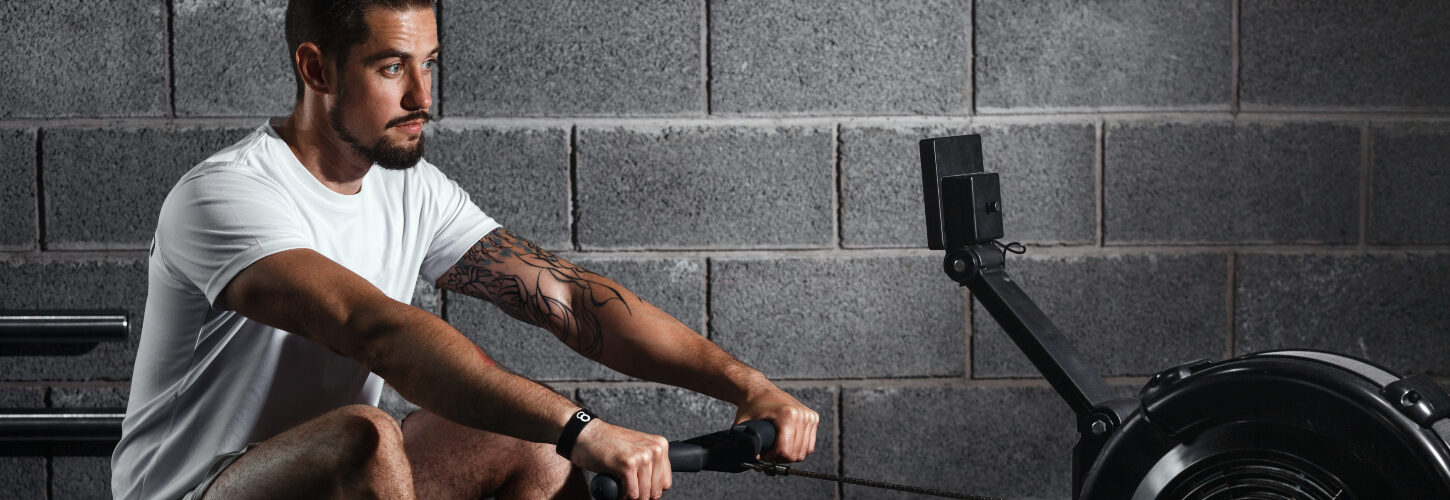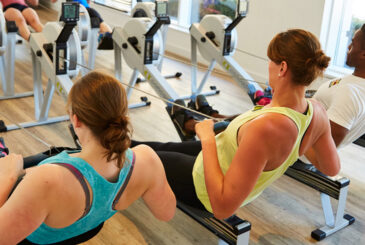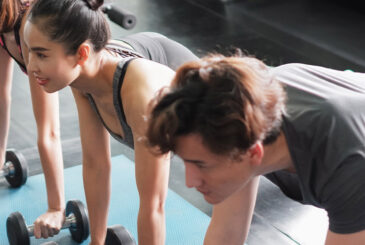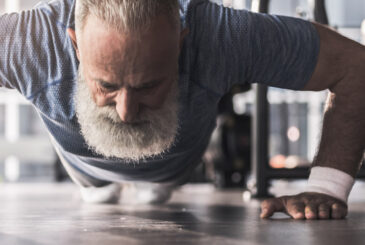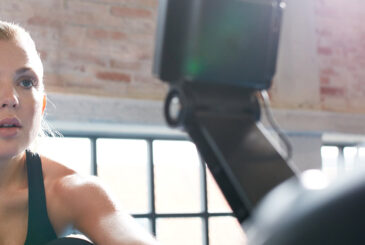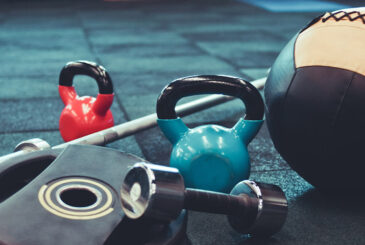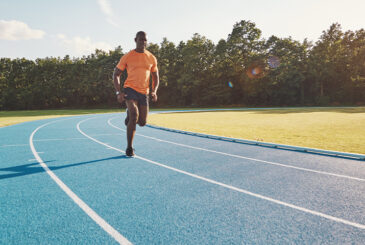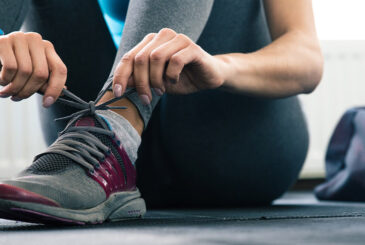In this article, the first of four focusing on the mental side of rowing, Dan Abrahams, psychology programmer at ROWBOTS, examines the ability to ready oneself for performance and to switch-on come the moment of truth
Picture this: You’re an Olympian – the best of the best – a member of the world-beating British rowing team, a part of the elite. You host a body that’s strong, that’s been physically trained to endure relentless pain stroke after stroke, and that’s ruthlessly proficient in its execution of the technique required for racing excellence.
You’re on the start line of the gold medal race. All you have to do now is do what you’ve prepared physically and technically to do over the previous four years – to row at your best and to try to cross that finish line first.
If only it was that simple!
The demands of rowing go beyond the physical and technical – they encompass the mental as well. In fact, mentality and mindset may be the difference that make the difference – you can’t separate body and mind in any sport, least of all one as demanding as rowing. And so, in your Olympic race, you face not just gruelling physical demands, not just precise technical challenges, but also brutal mental tests that can tend to make or break.
What are these mental tests facing an Olympian?
You have to be ready to switch-on. You have to have the capacity to direct your attention to attune to your most important tasks and to push out the irrelevant so that distractions melt away. You have to have the ability to row with confidence while holding the competing thought that this is going to be the toughest race of your career. You have to manage the thoughts, feelings, and emotions that emerge as you race, and that impact your ability to stick to the game plan, and to row at maximum output. You have to be able to retain a high mental intensity as well as a physical energy to maintain a stroke rate that others cannot compete with – at no time can you afford to drop in mental effort.
To switch on optimally for rowing, you have to be prepared to switch on. Preparation is King!
As an Olympian, these mental demands may well be considered a burden, but as a recreational rower (or a rower of any standard) these psychological challenges can be less a burden and more an opportunity – a chance to use rowing as a platform to practice and develop the kind of mental skills that are important for all aspects of life. They include skills that can be used in both the workplace and in the complex landscape that is your everyday life – skills that enable you to grow your ability to cope with the demands of life and to maintain a positive sense of well-being and mental health.
It’s these skills that the trainers at ROWBOTS obsess about. They’re passionate about the mental skills that underpin both performance competence and mental health, and they spend their days teaching ROWBOTS athletes tools and techniques that positively impact body and mind.
Just as Olympians have to switch-on for their big race, so we all have demands in our lives that require the skill of flicking that on-switch in an instant. But interestingly, what seems like an intuitive, in the moment action, is actually one that happens most effectively with great preparation. To switch-on optimally for rowing (and for all performance moments in work and in life), you have to be prepared to switch on. Preparation is King!
Interestingly, research has demonstrated that there is little difference physiologically between a stress response and an excitement response
There are, of course, many processes you can engage in to prepare to switch-on for a race or for a session on the ergometer, and in my practice as a sport psychologist, I find one quality particularly important – confidence. I also find one psychological construct particularly destructive – anxiety. Specifically, performance anxiety!
Confidence can positively drive your readiness, while performance anxiety can negatively influence your capacity to switch-on and row hard. So, building confidence and managing anxiety are twin-processes that all those interested in high performance would do well to develop.
Managing performance anxiety starts by understanding that the physical sensations we experience prior to and during performance moments are actually there to help us compete. Some nerves (a little stress) are useful for working out on the rower, for competing in the boat, or for any performance moment in your life. Those butterflies and that increased heart rate is your body preparing for action. If anything, it’s a sign that your body is feeding your brain information that it’s ready for it to switch-on and perform.
Interestingly, research has demonstrated that there is little difference physiologically between a stress response and an excitement response to an event. That excitement you used to experience around Christmas as a kid (and possibly still experience) is as a consequence of the same internal drivers as when you’re wracked with nerves prior to an important interview or presentation.
So, a good start to your switch-on routine is to appraise the nervous feelings you’re experiencing as a positive sign. Your body is ready to go. You’re ready to perform. A few butterflies – great! Heart thumping away – perfect!
Question one: “When I’ve been at my best when doing this activity/task before, what did that look like and what did others see?”
This question evokes memories of you at your best in the specific circumstance you’re in. By mentally retrieving this memory, and by rehearsing it in detail, you provide your brain and body with a blueprint of success. Through the work of a very famous (and sadly recently departed) psychologist called Albert Bandura, we know that past experiences are the number one sources of confidence. So remembering your best, and picturing it, can increase your confidence and subsequently help you switch-on.
Alternatively, you can immerse yourself in your imagination:
Question two: “What will it look like if I deliver my dream performance in this activity/task?”
Imagination can complement your memory, or can be used as a standalone tool in unfamiliar circumstances.
Once you’ve asked your memory question, you can bolster your confidence further by considering what a dream performance might look like in your upcoming pressure-filled moment. Priming your nervous system with inner pictures of the kind of behaviours that go beyond your best may seem like a twist on the ordinary, but doing so can genuinely help you to feel great about your upcoming performance. You’ve seen it in your mind’s eye, now you just have to go and do it.
Alternatively, if you’re about to embark on performance in a novel environment, say a longer distance to row, or a new event to conquer, then imagining your performance can help you to feel at ease in unfamiliar circumstances.
Again, we can borrow from Professor Bandura and his seminal work. Another powerful source of confidence in his model is imaginal experience – to imagine yourself capable!
Both memory and imagination are tools we use in the Rowbots gym that can drive the kind of inner pictures, and accompanying inner feelings that build confidence.
“I’ve done it before, I can do it again”
“I can see what I have to do, I just have to focus on doing them”
High confidence can underpin high performance. And when accompanied by a mind that’s able to manage anxiety, you have a winning combination that can help you prepare to switch-on just as the gun goes off.
To find out more about the different themes of ROWBOTS classes, including Switch On, visit their website.
–
–
–
–
–
–
–


